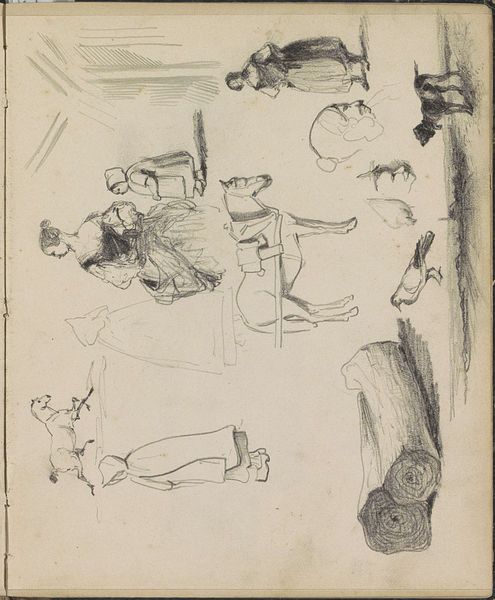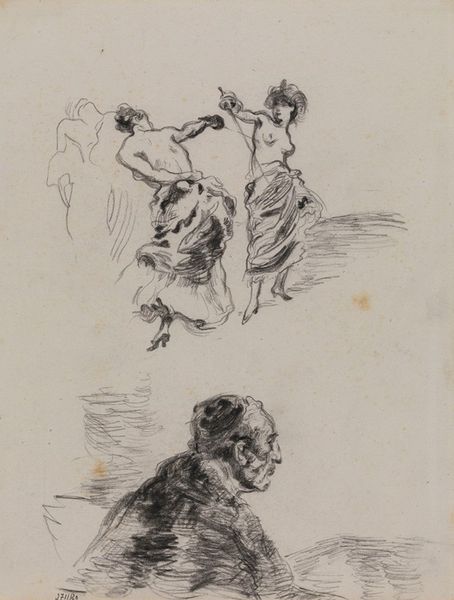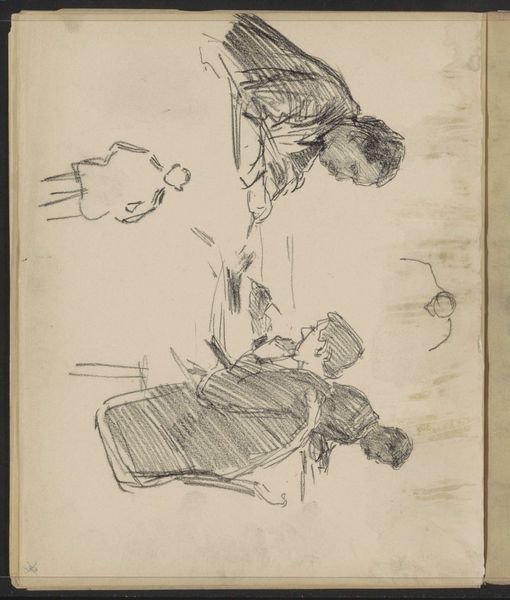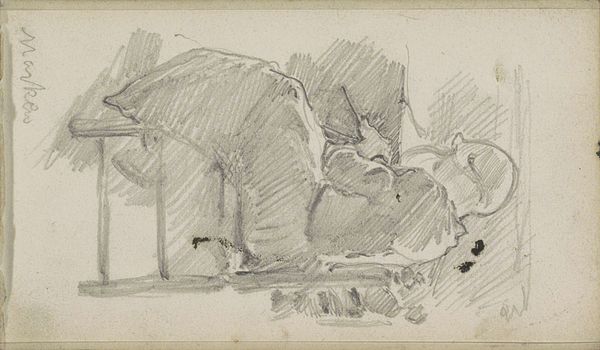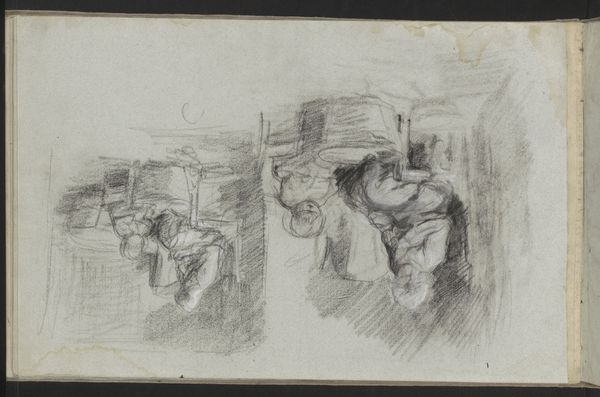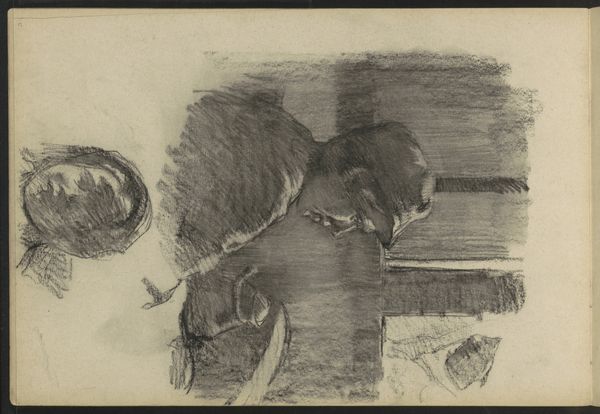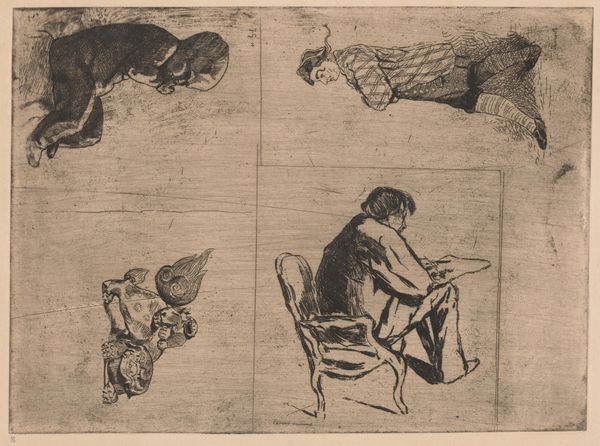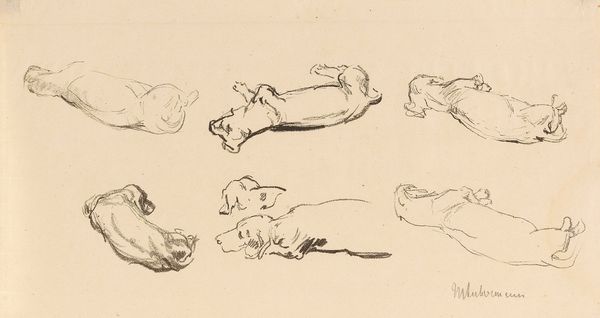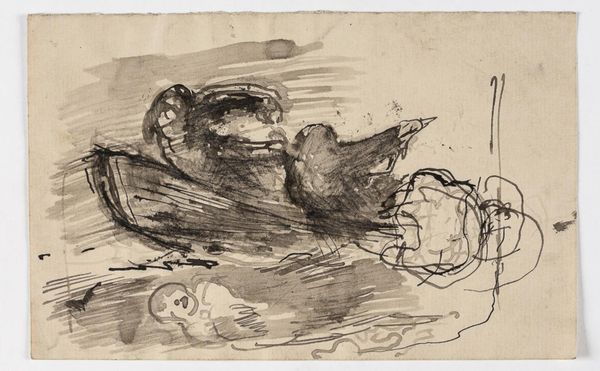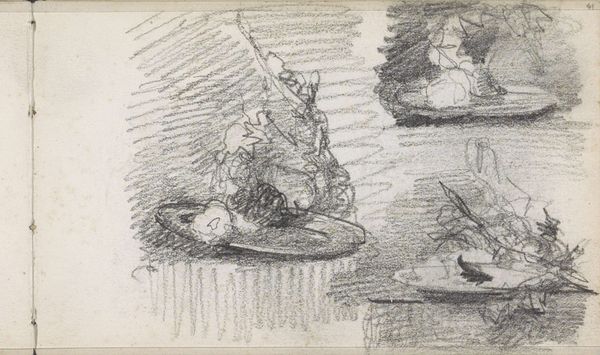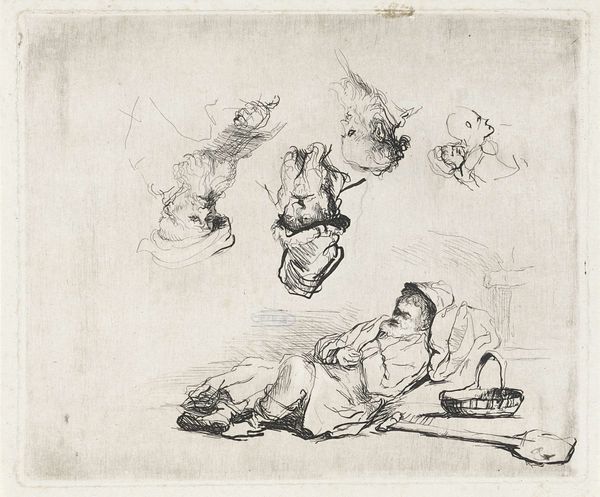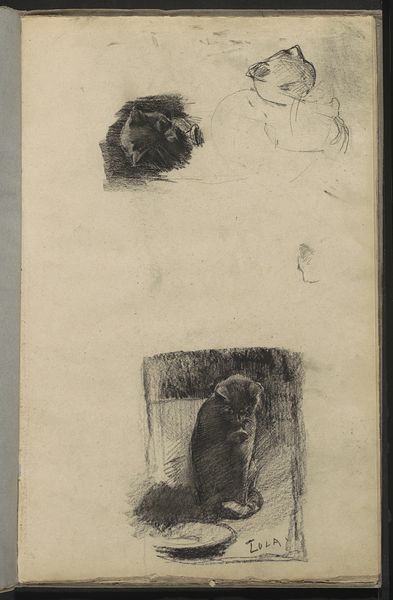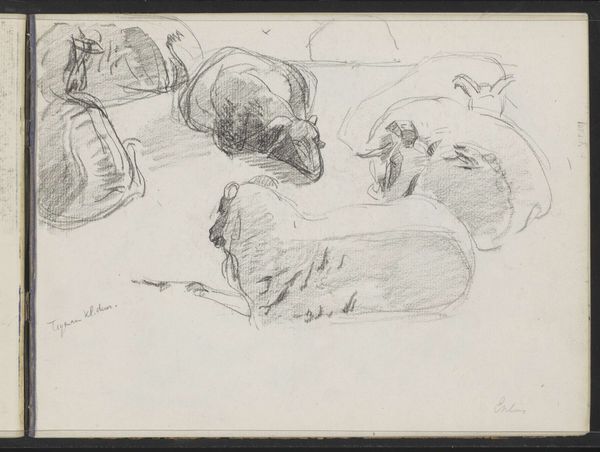
drawing, pencil
portrait
drawing
impressionism
pencil sketch
figuration
pencil
Copyright: Public Domain: Artvee
Curator: So, here we have John Singer Sargent's "Men Sleeping on Deck of Ship," created around 1876, using pencil. It's fascinating, isn't it? Editor: It is! It's quite a simple drawing, just a few men sketched on what I assume is the deck of a ship. The quick, almost nonchalant lines give it a casual, documentary feel. How do you interpret this work? Curator: It's a glimpse into the working conditions and travel of the time. Sargent is using readily available, inexpensive materials. This pencil sketch isn't just a study for something grander, perhaps. What's really interesting is how the labor is revealed, isn't it? Men forced to sleep exposed, subject to weather, revealing a specific mode of travel of the era, exposing social stratification. Editor: I hadn’t thought about it like that, but now that you mention it, it makes complete sense! So the materials and even the act of sketching become part of a story about labour. Curator: Precisely! What do you notice about the deck itself? Is it polished wood? Look at how he's depicting the very structure of their transit, influencing their circumstances, how it emphasizes the division of space and, by extension, social status. Editor: No, it seems pretty rough and utilitarian, likely impacting their comfort. It's almost a study in forced intimacy, of the artist witnessing and, in turn, implicating us, the viewers. I guess that pencil, easily transported and used, underscores that immediacy. Curator: And think about how this medium contrasted with more formal portraits, offering a completely different representation of labor. What's gained and what's lost in this rapid, unfiltered form? It makes me think about who these men were, how this drawing documents not just their physical state but their social reality too. Editor: Wow, I really appreciate you highlighting how even a simple pencil drawing like this one can reveal so much about social dynamics. Curator: Indeed. By considering the materials, the artist's process, and the context, we gain a much richer understanding of the artwork, as a kind of primary document of material conditions.
Comments
No comments
Be the first to comment and join the conversation on the ultimate creative platform.
